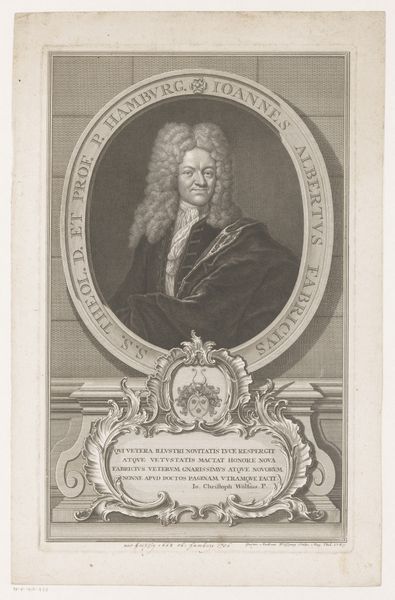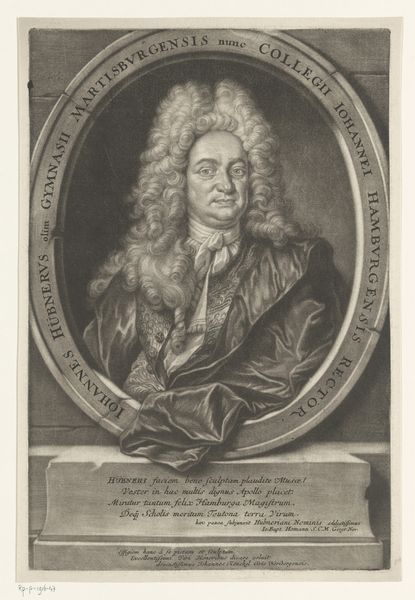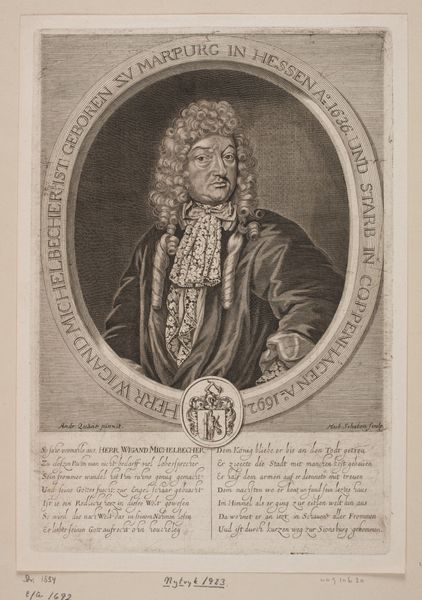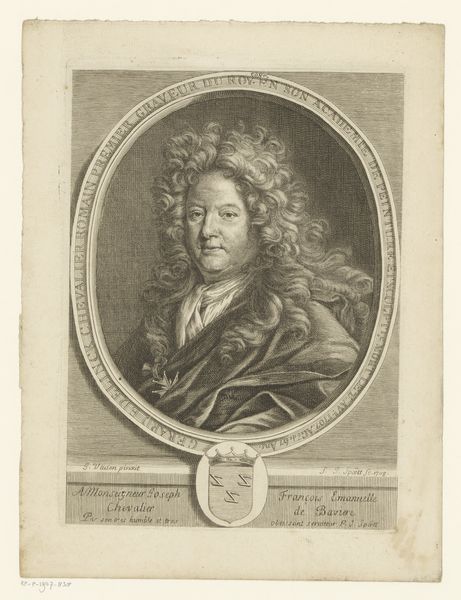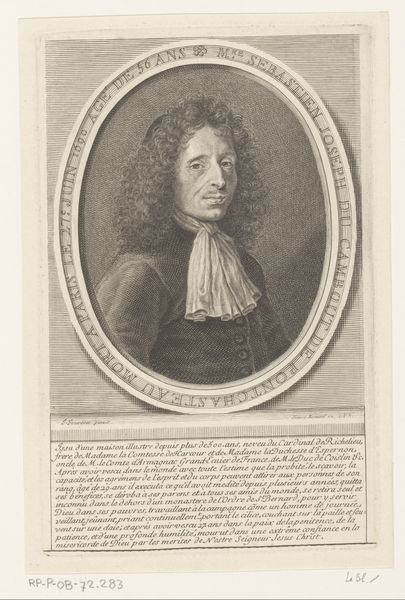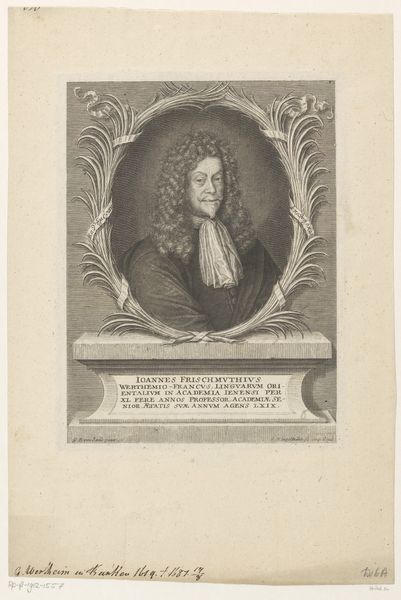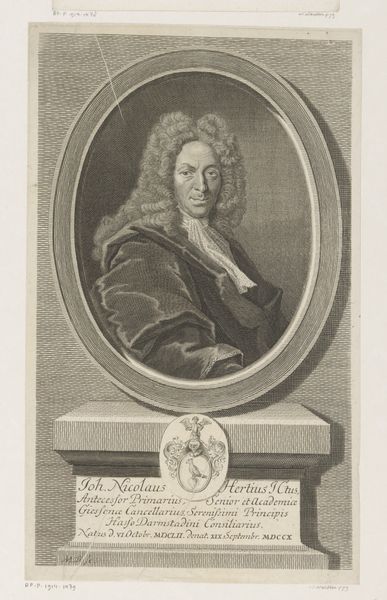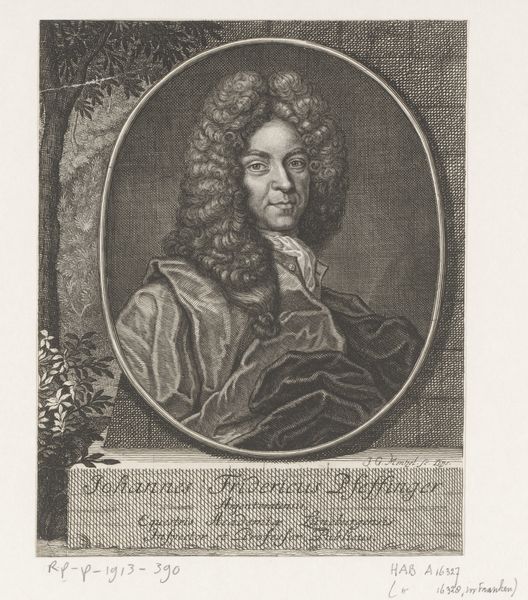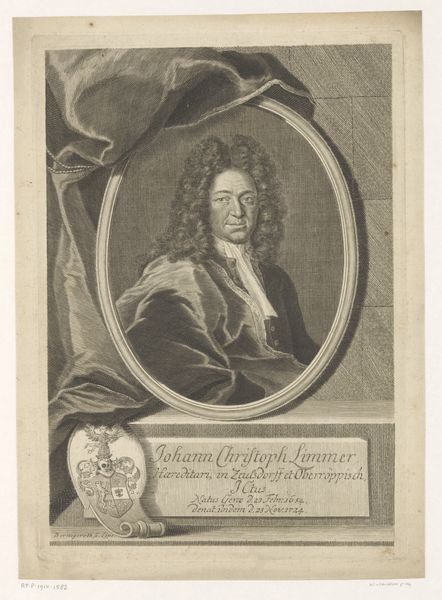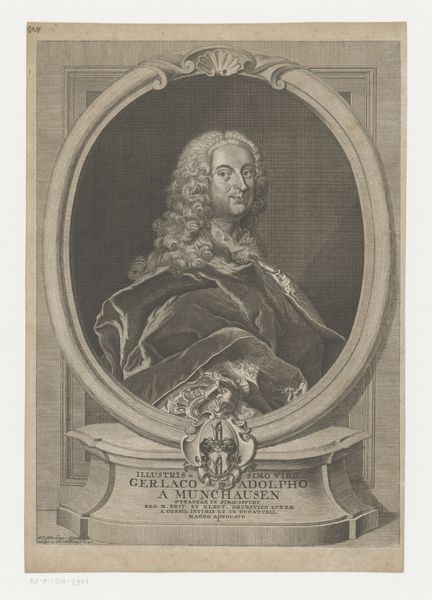
engraving
#
portrait
#
baroque
#
line
#
history-painting
#
engraving
Dimensions: height 333 mm, width 221 mm
Copyright: Rijks Museum: Open Domain
This is a portrait of Christian Leopold by Martin Tyroff, made using engraving, a printmaking technique that was widespread in the 18th century. The process begins with a metal plate, usually copper, into which the artist carefully carves lines using a tool called a burin. Ink is then applied to the plate, filling the etched lines, and the surface is wiped clean. When paper is pressed against the plate, the ink transfers, creating a precise, detailed image. The resulting print has a distinctive quality, with sharp lines and delicate shading. The act of engraving demands meticulous skill and patience. Tyroff would have needed to master the control of the burin to capture the likeness of Christian Leopold. Beyond its aesthetic qualities, engraving also served as a means of mass production. Prints could be replicated and distributed widely, making images accessible to a broad audience. Understanding the labor and skill involved in engraving adds another layer to our appreciation of this portrait. It reminds us that even seemingly simple images are the result of complex processes, steeped in both artistic tradition and wider networks of production.
Comments
No comments
Be the first to comment and join the conversation on the ultimate creative platform.

